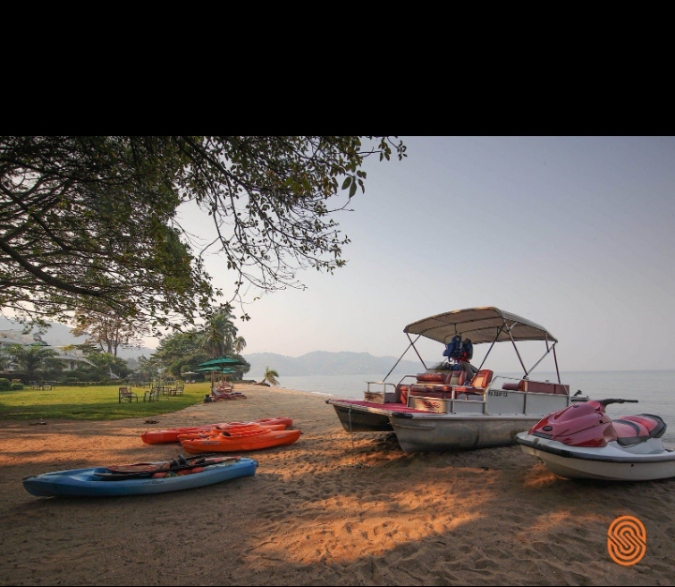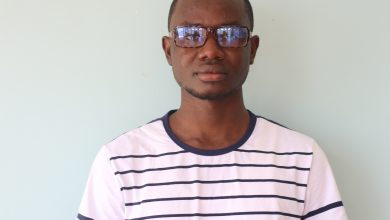Here Are 10 Reasons Why You Should Visit Rwanda More Than Once

|
Getting your Trinity Audio player ready...
|
We have taken time to bring you ten key reasons why Rwanda has to be on your list of places to see not just once, but more than once. It took us 10 days to visit a variety of choice locations and the only reason why we didn’t feel the impact of the hectic schedule was simply because of how amazing each and every one of the experiences were.
Safest Cities:
The internet is riddled with stories and statistics about why Rwanda is the safest country in Africa and possibly the sixth safest in the world. Depending on who you listen to, it tops many of the truly developed countries in the world for safety, even for solo travellers. But we don’t need anyone to tell us what we feel every time we visit Rwanda. Not sure how else to put it, but If you could look up “safe country” inside a dictionary you would see a picture of Rwanda. And it’s not just in Kigali, the capital. The custom permeates to all the nooks and crannies of the country. It’s like a product they market. And it’s clearly guarded jealously. That’s why it’s a magnet for meetings, conferences and events.
Cleanest Cities:
Before venturing outside Kigali, one would be tempted to marvel at the cleanliness of the place. Year after year as winner of the cleanest city in Africa, we didn’t realize that the award was hiding the real secret. The whole of Rwanda is clean!! The government has implemented several initiatives to promote cleanliness and hygiene in the country, including a ban on plastic bags, a monthly community cleaning program and a focus on waste management and environmental sustainability with a budget to match.
Decentralized Development:
Rwanda has embraced decentralized development as a crucial component of its governance and development strategy. This type of development approach that has proven to be a success in the country shifts power, decision-making authority, and resources away from centralized institutions or authorities and towards the local and regional levels.
It is distributed across multiple levels of governance, allowing local governments, community-based organizations, and grassroots initiatives to have a more active role in shaping and implementing development policies and programs.
This approach recognizes the unique needs, priorities, and context of different regions or communities within the country. It further empowers local communities, enhances their participation, and enables them to have greater control over their own development processes. Some examples of how decentralized development has helped Rwanda include:
1. Rwanda has established administrative units called “Umudugudu” and elected local councils to ensure grassroots involvement in governance. This has allowed communities to have a voice in shaping development policies and projects that directly impact their lives.
2. Local governments have greater authority and responsibility for sectors such as education, healthcare, infrastructure, and agriculture. This has led to increased efficiency in delivering basic services, building schools, health centers, roads, and water supply systems tailored to local needs.
3. The country has implemented programs such as the District Development Plans (DDPs) that enable local governments to formulate and implement development strategies specific to their areas. This has fostered entrepreneurship, investment, and job creation at the local level, boosting economic growth and reducing regional disparities.
4. Rwanda has embraced participatory budgeting, allowing local communities to be involved in decision-making regarding resource allocation. Through platforms like Community-Based Socio-Economic Development (CB-SED) and Performance-Based Grants (PBG), citizens can directly influence how funds are allocated and prioritize development projects according to their needs and priorities.
5. Decentralized development has played a role in fostering social cohesion and reconciliation in post-genocide Rwanda. Local governance structures provide spaces for dialogue, mediation, and community engagement, promoting understanding, healing, and building trust among different groups. It has contributed to the national agenda of unity and reconciliation.
All these combined provide visitors with a true sense that they are not missing out on being outside Kigali.
Culture and Traditions
Rwandan culture is rich, vibrant, and deeply rooted in the country’s history. You cannot understand Rwanda without taking a step back in time. Fortunately Rwandans are all too eager to share, even their traumas. Some notable aspects of Rwandan culture and traditions include:
1. Ubwenge (Wisdom): Rwandans value wisdom, knowledge, and learning. Elders play a significant role in society, as they are respected for their wisdom and experience. Traditional proverbs and storytelling are important means of passing down knowledge and moral values from one generation to another.
2. Greetings and Respect: Greetings are an essential part of Rwandan culture. It is customary to greet others with a handshake and a warm smile. Respect for elders, authority figures, and guests is highly valued. Rwandans often use honorifics when addressing older individuals as a sign of respect.
3. Intore Dance: Intore is a traditional dance form that showcases Rwandan cultural heritage. It combines graceful movements, energetic music, and vibrant costumes. Intore dancers perform during ceremonies, celebrations, and cultural events, representing bravery, heroism, and national pride.
4. Imigongo Art: Imigongo is a unique traditional art form in Rwanda. It involves creating decorative patterns using cow dung mixed with natural pigments. Imigongo art is commonly seen in wall paintings, pottery, and crafts. It holds cultural and spiritual significance, reflecting Rwandan aesthetics and creativity.
5. Inyambo Cattle: Inyambo cattle are a special breed of long-horned cows considered sacred in Rwandan culture. They are often seen as a symbol of wealth, power, and prestige. Inyambo cows are showcased during important ceremonies and events, such as royal rituals and cultural festivals.
6. Igitaramo: Igitaramo refers to traditional gatherings where people come together to celebrate, sing, dance, and share stories. These lively events promote community bonding, cultural preservation, and the passing down of traditions from one generation to the next. Music and drumming play a central role in Igitaramo celebrations.
7. Traditional Attire: Rwandan traditional attire varies among different ethnic groups. The women often wear colorful dresses called “umushanana” or “kitenge,” while men may wear a “kanzu” (long robe) paired with trousers. Traditional attire is still proudly worn during cultural events, weddings, and other special occasions.
8. Imihigo: Imihigo is a traditional practice of goal-setting and performance evaluation. It involves individuals or communities setting targets and working towards achieving them, often in areas such as agriculture, education, or community development. Imihigo fosters accountability, excellence, and collective progress.
9. Ubwiru (Hospitality): Rwandans are known for their warm hospitality. Guests are treated with utmost respect and welcomed into homes with open arms. Sharing food, stories, and traditional drinks like banana beer (urwagwa) is common during social gatherings.
10. Traditional Arts and Crafts: Rwandans are skilled artisans known for their craftsmanship. Basket weaving is a prominent traditional craft, with women using natural fibers to create intricate designs. Artwork, pottery, and wood carvings also reflect Rwandan cultural motifs and themes.
11. Naming Ceremony: Naming ceremonies hold significance in Rwandan culture. Newborns are given names that often reflect their family history, aspirations, or events surrounding their birth. These ceremonies are important cultural and social gatherings where family and friends come together to celebrate the new addition to the family.
12. Ibyiwacu Cultural Village: The Ibyiwacu Cultural Village in Rwanda offers visitors an opportunity to learn about traditional Rwandan culture. It showcases traditional practices, dances, and rituals, allowing visitors to engage with local communities and gain a deeper understanding of Rwandan heritage.
Strong Institutions:
Rwanda is often recognized as a country with strong institutions, as it has made significant strides in various key areas. Examples of how Rwanda has built and strengthened its institutions include:
1. Rule of Law and Judicial System: Rwanda has a reformed judiciary that ensures the arm of government is independent and efficient. The country has implemented measures to enhance access to justice, such as community-based Gacaca courts for post-genocide reconciliation and traditional dispute resolution mechanisms. The establishment of the Rwanda Governance Board (RGB) also helps promote good governance practices and adherence to the rule of law.
2. Governance and Accountability: Rwanda has taken robust steps to combat corruption and promote accountability. It has created institutions like the Office of the Ombudsman and the Rwanda Revenue Authority (RRA) to ensure transparency, prevent corruption, and improve public service delivery. The National Public Prosecution Authority (NPPA) plays a critical role in prosecuting corruption cases, demonstrating the government’s commitment to accountability.
3. Democratic Processes: Rwanda has made efforts to strengthen its democratic processes by holding regular elections. The National Electoral Commission (NEC) ensures free and fair elections, and political parties are encouraged to participate in the democratic process. Rwanda has also implemented gender quotas, leading to significant female representation in the parliament, fostering inclusivity and political pluralism.
4. Economic Institutions: Rwanda has implemented policies to create a favorable business environment and attract investment. Institutions such as the Rwanda Development Board (RDB) and the Rwanda Private Sector Federation (PSF) support economic growth by promoting entrepreneurship, facilitating business registration, and providing investment services. The introduction of e-governance systems has streamlined processes and reduced bureaucracy.
5. Social and Civil Institutions: Rwanda recognizes the importance of strong social and civil institutions. The country has invested in education and healthcare systems to provide quality services to its citizens. Additionally, civil society organizations play an active role in promoting human rights, advocating for vulnerable groups, and contributing to social development.
Through these efforts, Rwanda has built strong institutions that promote good governance, uphold the rule of law, and foster economic and social development. Most importantly, however, strong institutions require effective leadership and a clear vision for the future. Rwanda’s leadership has demonstrated a strong commitment to national development and governance reforms. Vision 2020, now succeeded by Vision 2050, provides a strategic framework for sustainable economic growth, social cohesion, and good governance.
The Wildlife Experience:
Despite its relatively small size, Rwanda has a diverse range of wildlife, including gorillas, buffalo, chimpanzees, elephants, lions, leopards, mountain gorillas and the white and black rhinos. However, the country’s wildlife population has faced significant challenges in the past, including habitat loss, poaching, and conflict.
In the 1990s, Rwanda’s civil war and genocide had a devastating impact on the country’s wildlife. National parks and protected areas were destroyed, and many animals were killed for food or as a result of conflict. The mountain gorilla population, in particular, was hit hard, with half of the population killed during the conflict.
Since then, the government of Rwanda has made significant efforts to protect and conserve the country’s wildlife. National parks and protected areas have been restored and expanded, and anti-poaching measures have been put in place. As a result, the mountain gorilla population has increased, and other species such as lions and black rhinos have been reintroduced to the country.
Today, Rwanda’s national parks, including Volcanoes National Park and Akagera National Park, are popular tourist destinations, attracting visitors from around the world who come to see the country’s unique wildlife and beautiful natural landscapes.
Here are some of the top wildlife destinations in Rwanda:
1. Volcanoes National Park – This Park is home to the famous mountain gorillas, which are one of the main attractions in Rwanda. Visitors can trek through the forest to see these amazing creatures up close.
2. Akagera National Park – This park is located in the eastern part of Rwanda and is home to a wide range of wildlife, including elephants, lions, leopards, giraffes, and zebras.
3. Nyungwe National Park – This park is located in the southwestern part of Rwanda and is home to a variety of primates, including chimpanzees and colobus monkeys.
4. Gishwati-Mukura National Park – This park is located in the western part of Rwanda and is home to a variety of wildlife, including chimpanzees and golden monkeys.
5. Lake Kivu – This lake is located in the western part of Rwanda and is home to a variety of aquatic wildlife, including hippos, water buffalo and crocodiles.
Rwanda take conservation and the welfare of the animals very seriously, which is why people flock to Rwanda to see animals they can see in other locations.
The Beautiful People:
Rwanda is dominated by two large Bantu tribes namely ‘Utu and Muntu’. The inhabitants of these two tribes have thin, slightly long and beautiful faces with well sculptured bodies. This makes the women extremely pretty and the men charming. This is evident in the many beautiful Rwandan celebrities and social media influencers who have risen to limelight.
Rwanda’s entertainment industry is full of good looking men; from the music scene to fashion and sports. However, there are some that have risen above the rest. Legends like Intore Masamba, Kizito Mihigo, and of course Jimmy Gatete blended with the new era of Médard Ngabo, Benjamin Mugisha, Francis Iraguha and James Gwiza are just a few among the newest of Kigali’s most handsome celebrities.
Among several magnificently beneficial things God gave to Rwanda are the excellent beautiful girls. Rwandan women are known for their elegance and alluring beauty. Truth be told, many outsiders do not just think about their thousand hills and slopes or the sweet coffee and gorillas; a lot of attention goes to their beautiful women. Popular Twitter influencer, AdvoBarryRoux instantly went viral after he tweeted “Before you get married, please visit Rwanda, you will thank me later” along with pictures of beautiful Rwandan ladies.
It’s no secret, girls just like guys, love compliments. But Rwandan girls are not your average girls as concluded. On top of their beauty, they are well endowed with intelligence, grace, self respect, astuteness and pride.
The Golf Experience:
Africa is well known for her incredible safari experience, her diverse and spectacular scenery. Also evident is its multi-cultural flair. What many don’t know is that the continent is also home to 828 golf courses. Many of which are at par with the likes of Europe and North America’s best.
Golf is one of the emerging sports in Rwanda. In partnership with the private sector, the government has made substantial investments into the sport to tap into the lucrative global golf tourism market estimated at $44 billion.
In the heart of the City lies the Kigali Golf Club, Rwanda’s premier 18-hole golf course, this sits on 52 hectares. Several tournaments are held throughout the year. These include the CIMERWA annual golf tournament.
Outside Kigali, you can enjoy a round of golf at the Falcon Golf Club, a new waterfront nine -hole course in the Rwamagana district, in the Eastern Province, just 1 hour from the Capital City, Kigali. Playing golf in Rwanda is truly a wonderful experience – the weather is beautiful, and the courses overlook spectacular views. Not to mention their proximity to incredible tourist locations allowing you to play golf in the morning, explore Rwanda in the afternoon and retire to world class accommodation at the end of the night.
The Beautiful Country:
The landscapes in this green country are truly breath-taking. Many visitors to Rwanda have remarked that the physical beauty of the country is without an equal on the African continent. Rwanda has five volcanoes, twenty-three lakes and numerous rivers, some forming the source of River Nile and the River Congo. Spectacular volcanoes and dense tropical forests dominate the north of the country, while gentle hills and valleys, calm lakes and turbulent rivers in both savannah and dense tropical vegetation dominate the rest of the country.
The high-altitude forests of the Virunga volcanic mountains, in northern Rwanda are home to the world’s largest number of endangered mountain gorillas. Numbering in the hundreds, the gorillas live in protected areas, free from poachers. The gorillas can be viewed in their natural mountain habitats at a close range.
Rwanda is bordered by Uganda to the north, Tanzania to the east, Burundi to the south and the Democratic Republic of Congo to the west. The country has a temperate climate, with two rainy seasons (February to April, November to January). Average temperatures range from 16-22 degree Celsius. The climate is perfect for tourists.
Anyone visiting ‘the land of a thousand hills’ is in for a multitude of beautiful surprises,and
of course the Gorillas
The unique opportunity to see gorillas in their natural habitat is unforgettable, some even say life changing. Encounters with gorillas as they go about their daily lives are carefully managed, with expert trackers and guides leading small groups of tourists up bamboo-covered slopes to spend a precious and awe-inspiring hour just a few feet away from the gentle creatures.
The largest living primate, gorillas are spread across much of the equatorial African rainforest. Broadly speaking, the species is split into lowland gorillas and mountain gorillas.
The volcanic range which spans Rwanda, Uganda and the Democratic Republic of the Congo is home to the endangered mountain gorilla. Tracking gorillas in Rwanda is safe and gorillas are relatively accessible.
At the latest count, there are approximately 1,000 mountain gorillas in the wild, with 604 in the Virunga Massif. The population is slowly increasing, thanks to concerted efforts between the impacted governments, communities and NGOs.
There are twelve gorilla families living in the Volcanoes National Park, which are fully habituated, with a few others habituated solely for scientific research. The groups, or troops, consist of at least one silverback along with several females and youngsters.
The troops are somewhat fluid in composition, but tend to stick to a preferred area. They are constantly monitored and protected by park rangers, with each group coming into contact with tourists for a strict maximum of one hour per day.
Eight tracking permits are issued per troop per day, meaning the encounter is as intimate and as unobtrusive as possible. With only 96 permits available each day in Rwanda, it is highly recommended to book in advance, either online or via a reputable tour operator.
Visitors gather at the Volcanoes National Park headquarters in Kinigi at 7am, and are allocated a family group on the day according to fitness levels, as well as being briefed on protocols and rules for visiting the gorillas.
The families are known as Susa, Igisha, Karisimbi, Sabyinyo, Amahoro, Agashya, Kwitonda, Umubano, Hirwa, Bwenge, Ugyenda and Muhoza. We saw the Muhoza.
Hikes up to their various locations can last anything from 30 minutes to four or more hours, reaching an altitude of between 2,500m and 4,000m. Porters are available to carry backpacks and cameras, as well as to offer a helping hand along the route.
Eight tracking permits are issued per troop per day, meaning the encounter is as intimate and as unobtrusive as possible. With only 96 permits available each day in Rwanda, it is highly recommended to book in advance, either online or via a reputable tour operator.
Visitors gather at the Volcanoes National Park headquarters in Kinigi at 7am, and are allocated a family group on the day according to fitness levels, as well as being briefed on protocols and rules for visiting the gorillas.
For those interested in tracing the footsteps of Dian Fossey, her tomb is a 30-minute drive from the park headquarters and then two or three hours hike through the forest, to above 3,000m altitude.
Article, Courtesy of: Prince Tonye Pricewill





